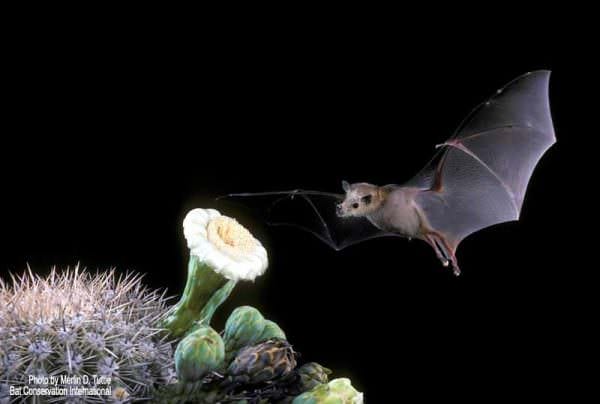Service-led partnerships with local communities, conservation groups, agencies and Mexico bring bat back from the brink of extinction.
 Lesser Long-Nosed Bat
Lesser Long-Nosed Bat
USA – -(Ammoland.com)- A charismatic, winged pollinator responsible for helping produce tequila is making a comeback despite tough odds thanks to a U.S. Fish and Wildlife Service-led three-decade partnership. Although many bat species in North America today are vexed with declining populations, partners in the United States and Mexico have helped recover the lesser long-nosed bat, which today becomes the first bat ever removed from Endangered Species Act (ESA) protections due to recovery.
When initially protected under the ESA in 1988, there were fewer than 1,000 of the nectar-feeding bats at 14 known roosts range wide. Today, there are an estimated 200,000 bats at 75 roosts in the U.S. Southwest and Mexico.
“The science clearly shows threats to the bat have been eliminated or reduced to the point that the bat has recovered,” said Service Southwest Regional Director Amy Lueders. “The Service is proud of our strong, decades-long partnerships with very diverse stakeholders on behalf of the lesser long-nosed bat. Without partnerships and collaborations such as these, successful recovery would not be possible.”
“It is great to see the lesser long-nosed bat has reached its recovery goals and is no longer under imminent threat of extinction,” said Dr. Winifred Frick, Bat Conservation International’s chief scientist. “Scientists and conservation groups in both Mexico and in the U.S. have worked together over the years to protect the species and mitigate the threats to its long-term viability. The story of the lesser long-nosed bat shows that conservation and science work together to provide species the chance to recover and persist.”
“Any time we can properly recover a species so that it can be removed from the Threatened

